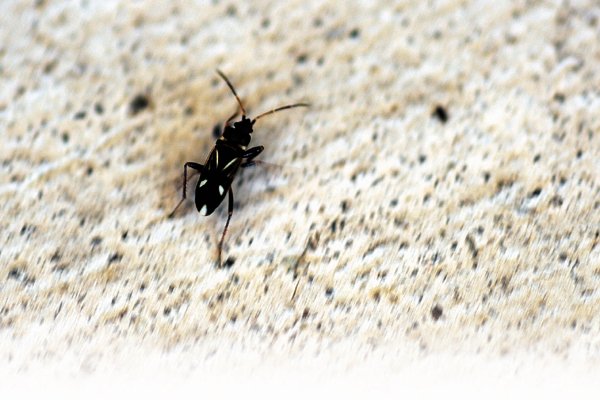Licha Rubio started noticing an influx of strange bugs
multiplying in her house and around her yard about three weeks ago.
They’re easily mistaken for ants without a closer look
– which reveals distinct cream-and-black abdominal marks that
inspired its name, the tuxedo bug – and they began increasing in
numbers, at one point blanketing portions of her backyard’s wood
fence and home’s windows.
Licha Rubio started noticing an influx of strange bugs multiplying in her house and around her yard about three weeks ago.
They’re easily mistaken for ants without a closer look – which reveals distinct cream-and-black abdominal marks that inspired its name, the tuxedo bug – and they began increasing in numbers, at one point blanketing portions of her backyard’s wood fence and home’s windows.
At Rubio’s house in a cul-de-sac off Central Avenue and near Calaveras School, there were thousands of the insects.
So she paid an exterminator to fumigate her home – three times – and she has tried to get help from Hollister, with little luck.
Rare to the area but inhabited throughout the West, according to a database on BugGuide.net, the tuxedo bugs are a genus in the plant bug family. They’re known as harmless, other than the annoyance factor, and they don’t bite.
For the past several weeks, though, they have been pestering Rubio and many other residents in two neighborhoods around the school, which had to hire a fumigator to spray the building perimeter, said Principal Christine White. Other county officials have gotten involved over the past week – including Agriculture Commissioner Ron Ross and Supervisor Jaime De La Cruz, who represents the area – by meeting with the neighbors,
Her theory, while unconfirmed, is that the bugs lost their temporary habitat when the orchard was cleared and they have ventured off to find new homes.
School leaders have eliminated most of the tuxedo bugs on the campus, but the principal noted how some remain in the classrooms, that they’re “slowly dying off.”















